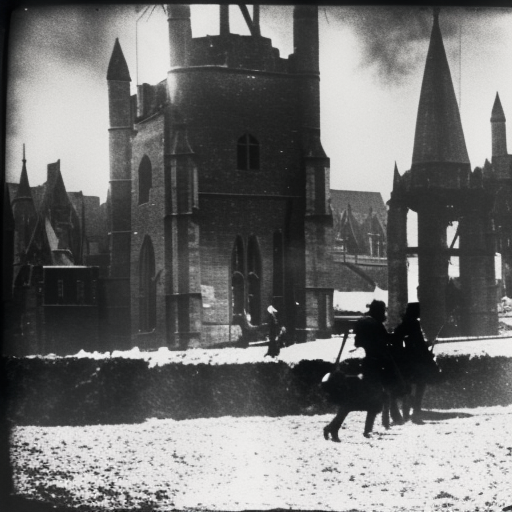Summary: First Anglo-Dutch War
The First Anglo-Dutch War was a conflict that took place between England and the Dutch Republic from 1652 to 1654. It was primarily fought over trade and maritime dominance. The war ended with the Treaty of Westminster, which restored peace between the two nations but left many underlying issues unresolved.
Causes of the War
The main cause of the First Anglo-Dutch War was the competition between England and the Dutch Republic for control of trade routes and colonies. Both nations had powerful naval fleets and were eager to assert their dominance in the lucrative trade networks of the time. Additionally, tensions were fueled by religious differences, with England being predominantly Protestant and the Dutch Republic having a large Protestant population as well.
Naval Battles and Tactics
The war was primarily fought at sea, with both sides engaging in numerous naval battles. The English navy, led by Admiral Robert Blake, employed innovative tactics such as line-ahead formations and the use of fire ships. The Dutch navy, under the command of Admiral Maarten Tromp, relied on their superior gunnery skills and maneuverability. The battles were often intense and bloody, with both sides suffering heavy casualties.
Outcome and Impact
The war ended with the Treaty of Westminster in 1654. The treaty restored peace between England and the Dutch Republic but did not resolve the underlying issues that had caused the conflict. England emerged as the dominant naval power, but the Dutch Republic retained its economic strength and continued to challenge English supremacy in trade.
Legacy
The First Anglo-Dutch War had a significant impact on the balance of power in Europe. It marked the beginning of England’s rise as a global maritime power and the decline of the Dutch Republic as a dominant force. The war also highlighted the importance of naval warfare and influenced subsequent naval tactics and strategies.
Key Events
- Battle of Dover: In 1652, the war began with a Dutch attack on an English fleet off the coast of Dover. The English fleet, under the command of Admiral Robert Blake, successfully repelled the Dutch assault.
- Battle of Portland: In 1653, the English navy, led by Admiral Robert Blake, engaged the Dutch fleet off the coast of Portland. The battle was inconclusive, but the English fleet managed to prevent the Dutch from landing troops in England.
- Battle of the Gabbard: In 1653, the largest naval battle of the war took place near the Gabbard shoal off the coast of the Netherlands. The Dutch navy, led by Admiral Maarten Tromp, inflicted heavy losses on the English fleet, but failed to secure a decisive victory.
- Battle of Scheveningen: In 1653, the final major battle of the war occurred off the coast of Scheveningen. The English navy, under the command of Admiral Robert Blake, clashed with the Dutch fleet, led by Admiral Maarten Tromp. The battle was fierce and resulted in heavy casualties on both sides, but ultimately ended in a Dutch victory.
Conclusion
The First Anglo-Dutch War was a significant conflict that shaped the balance of power in Europe and marked the beginning of England’s rise as a global maritime power. The war highlighted the importance of naval warfare and influenced subsequent naval tactics and strategies. Although the Treaty of Westminster restored peace between England and the Dutch Republic, the underlying issues that had caused the conflict remained unresolved, setting the stage for future conflicts between the two nations.












